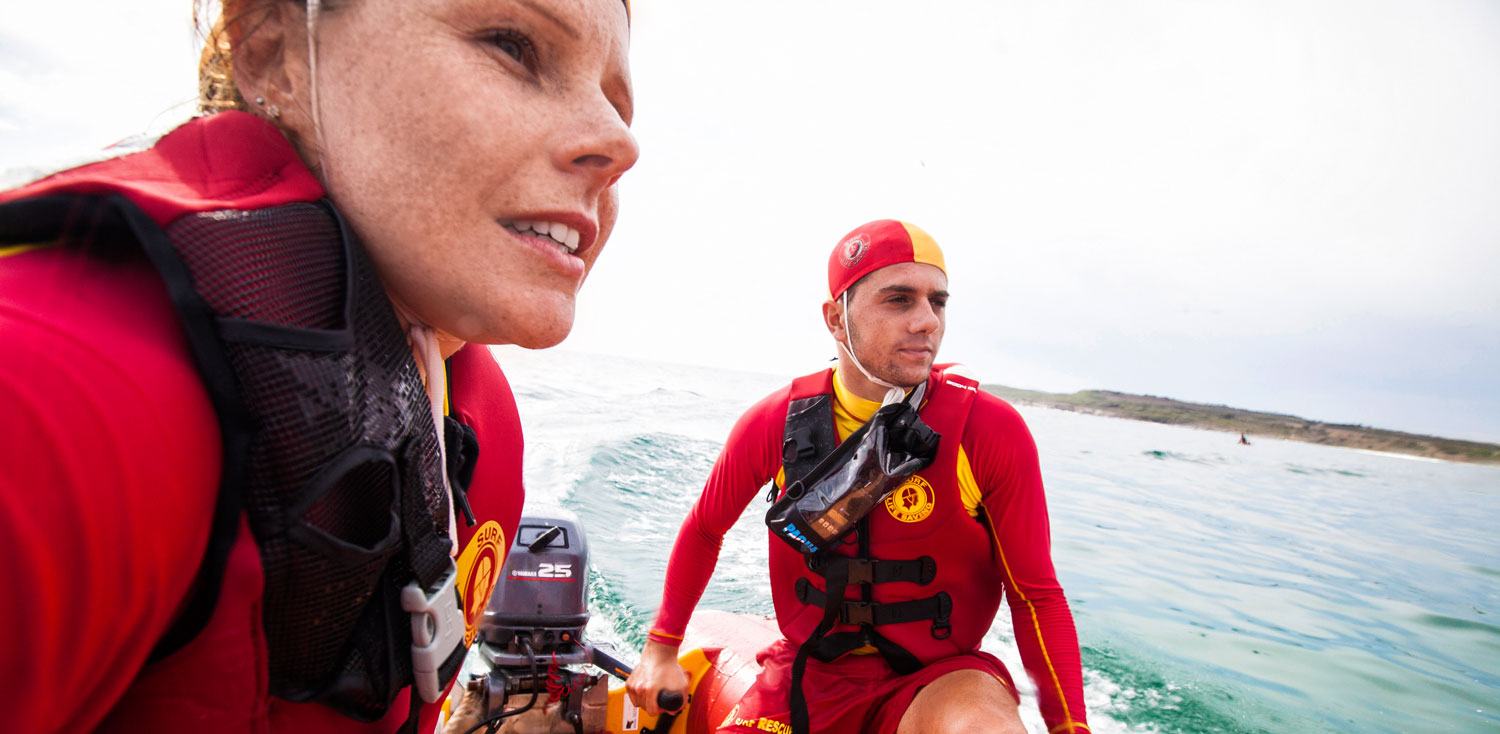 Kaitlyn Akers FAIM knows how important teamwork is when the mission is to save a life. A volunteer lifesaver at Mudjimba Beach on Queensland’s Sunshine Coast, she helped rescue an unconscious man from the water in 2014.
Kaitlyn Akers FAIM knows how important teamwork is when the mission is to save a life. A volunteer lifesaver at Mudjimba Beach on Queensland’s Sunshine Coast, she helped rescue an unconscious man from the water in 2014.
“What struck me that day was the communication between all of us. We had all been trained to a level that we all knew what to do,” she says. “There was a great deal of respe
ct amongst each of the people who were involved: ambulance, paramedics, lifeguards and volunteers – because we all were there with the skills that were needed to get the job done.”
Unfortunately it wasn’t a Baywatch ending. The man was taken to hospital but died several days later – however Akers was relieved that his family did get to spend some time wi
th him. And she felt the protocols at the beach couldn’t have been executed any better. A peer support trainer, surf sports competitor and volunteer member of the after-hours emergency response team, Akers was named Queensland’s top lifesaver in 2010–11.
Developing leadership skills
When she’s not at the beach, Akers is a manager of commercial projects for a finance company, but she says working as a volunteer helps her markedly in her day job.
“It gives you a deeper sense of teamwork and it also hones your skills in terms of leadership and how you relate with others and negotiate outcomes. When you work with volunteers it requires you to extend your skills to the point where people get to really engage with your mission and what you want to accomplish.
“You have to engage with people on a deep, personal level. They want to know what they are doing is contributing and it has worthy outcomes. If you can do that in your volunteer life it helps in your work life – how to motivate people and bring them along for a journey.”
Putting safety first
Scott McCartney, Northern NSW Lifeguard Coordinator for Surf Life Saving Australia (SLSA), manages a stretch of coast from Duranbah – the most northerly beach in New South Wales – to South West Rocks, 400km south. He says, “One of the best parts of the job is that you never know what is going to happen. You can set up your guards, your beach and your supervisors, but you never know what incidents or scenarios will unfold each day.”
McCartney’s job is to ensure the lifeguards have what they need to do their jobs and to act as a liaison point with local councils. While he admits there is a little politicking from time to time, given the mix of people and organisations involved, he says it works because looking after the public is the overriding concern for everyone.
Whether we are volunteers, paid lifeguards or someone else, it is always good to remember that we are all there trying to achieve the same important goal…as long as the beach is safe and we all work together.
Shark attack
Front and centre for the public, particularly over the past 18 months, is the concern about sharks. There have been a number of fatal attacks since September 2014 in Byron Bay and Ballina, and noticeably more sharks feeding along that stretch of coast. McCartney says the movement’s response is actually quite measured.
“It’s definitely an issue with the sheer number of sightings and the attacks we’ve had over the last six months. As a lifeguard service we’ve found our protocols haven’t changed too much. We’re just more vigilant. I do tell all my guards our main role still is, and will be, the safety of the swimmers. We have a lot more drownings than fatal shark attacks each year.”
Lifesaving by numbers
Preventing and rescuing swimmers from drowning is an enormous task when you consider that Australia has 36,000km of coastline and around 12,000 beaches. Yet since it was founded in 1907, SLSA members have rescued 630,000 people who’ve got into trouble at our beaches.
The country’s major water safety, drowning prevention and rescue authority, the SLSA has about 170,000 members and 313 affiliated surf lifesaving clubs across Australia.
Big numbers like these require big community resources. SLSA is the largest volunteer-driven organisation in Australia, with some 49,000 people offering up their time for free in the national surf lifesaving season of 2014–15.
With so many volunteers keeping it going, it’s a remarkable organisation making a valuable contribution to the nation. But there’s no way it’s glamorous work, says McCartney. In fact his biggest gripe – other than people not swimming between the flags – is the view that lifesavers have an ideal, almost perfect job.
“When you have to drag someone unconscious out of the water, or there’s a young kid with a spinal injury and stuff like that, it’s not all happy days and sitting in the sun,” he says. “I think (the television program) Bondi Rescue has opened up a few eyes to that. Just because your office is the beach it doesn’t mean it’s a cruisy lifestyle.”



